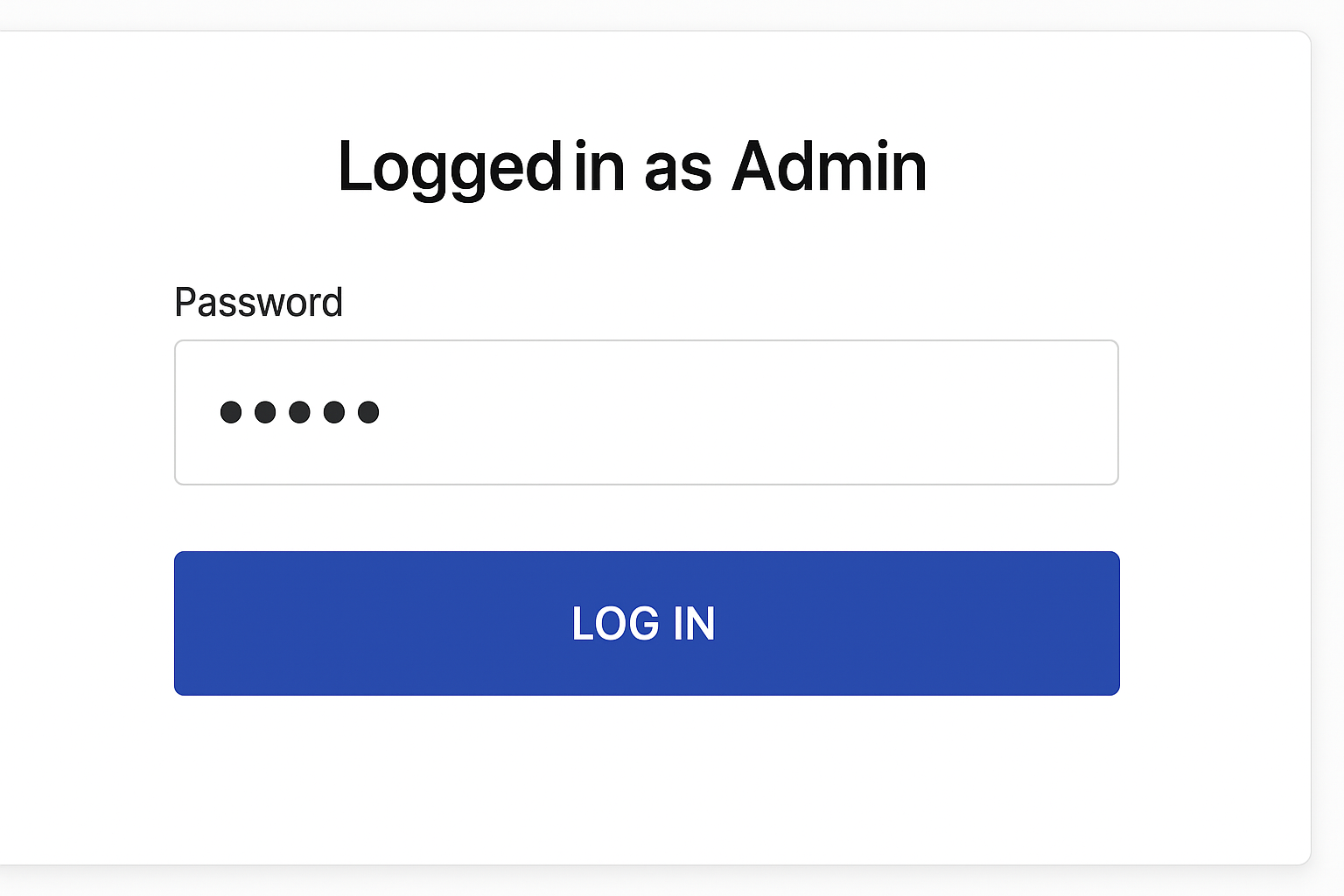
Pentest Chronicles
From Source Files to Admin: Exploiting Hardcoded Credentials in a Web App

Krystian Działowy
October 16, 2025
The fact that any potential credentials from the database didn’t work for the web application's login page pushed me then to analyze the application's own code more deeply. It was here that I uncovered a critical vulnerability: the application's login mechanism was handled entirely on the client-side, with administrator credentials hardcoded directly into a static JavaScript file (sic!).
This flaw allowed any user with network access to the application to retrieve the administrator password simply by inspecting the application's source files. This effectively granted unauthenticated users full administrative control over the system, allowing them to add, edit, and delete content at will. About the Vulnerability The core of this vulnerability lies in a fundamental misunderstanding of web security principles: never trust the client. The application was built using a modern frontend framework (React/JS), but its authentication logic didn't communicate with a secure backend server to verify credentials. Instead, when a user entered a password, the browser's JavaScript would simply check if the input matched a constant string value stored within its own code.
Since browsers need to download all JavaScript files to run a web application, this "secret" password was freely available to anyone who opened their browser's developer tools or downloaded the file directly.
Step-by-Step Exploitation 1. Locating the Credentials
The first step was to identify the static assets being loaded by the application. By inspecting the network traffic or the page source, I located a specific JavaScript file: main.96efcb33.chunk.js.
Downloading and examining this file revealed the application's client-side logic.
2. Analyzing the JavaScript File
Inside the minified JavaScript code, a simple conditional check was responsible for handling the login. The code compared the user's input (t) against two hardcoded strings, one for an editor and one for an administrator:
 The text in quotation marks above, consisting solely of the letter X, turned out to be the passwords of the administrator and editor. Therefore, by reading these values directly from the code, I obtained the plaintext administrator password.
The text in quotation marks above, consisting solely of the letter X, turned out to be the passwords of the administrator and editor. Therefore, by reading these values directly from the code, I obtained the plaintext administrator password.
3. Achieving Full Control
With the discovered password, I navigated to the login page and authenticated successfully as "Admin":
 Final Notes This case is a textbook example of how a single insecure development practice can completely compromise an application. The vulnerability was deemed critical because it provides a direct, low-effort path to full administrative control for any anonymous user. If combined with other potential flaws, such as an unrestricted file upload capability, this access could easily lead to a full server takeover.
Final Notes This case is a textbook example of how a single insecure development practice can completely compromise an application. The vulnerability was deemed critical because it provides a direct, low-effort path to full administrative control for any anonymous user. If combined with other potential flaws, such as an unrestricted file upload capability, this access could easily lead to a full server takeover.
My recommendations for the client are straightforward and essential for any secure web application:
• Immediately remove all hardcoded credentials from the frontend source code and implement a proper server-side authentication system (e.g., using JWT, sessions, or integrating with LDAP/AD).
• Passwords must be stored securely on the backend, never in plaintext. They should be processed with a strong, one-way hashing algorithm like bcrypt, scrypt, or Argon2.
Next Pentest Chronicles

When Usernames Become Passwords: A Real-World Case Study of Weak Password Practices
Michał WNękowicz
9 June 2023
In today's world, ensuring the security of our accounts is more crucial than ever. Just as keys protect the doors to our homes, passwords serve as the first line of defense for our data and assets. It's easy to assume that technical individuals, such as developers and IT professionals, always use strong, unique passwords to keep ...

SOCMINT – or rather OSINT of social media
Tomasz Turba
October 15 2022
SOCMINT is the process of gathering and analyzing the information collected from various social networks, channels and communication groups in order to track down an object, gather as much partial data as possible, and potentially to understand its operation. All this in order to analyze the collected information and to achieve that goal by making …

PyScript – or rather Python in your browser + what can be done with it?
michał bentkowski
10 september 2022
PyScript – or rather Python in your browser + what can be done with it? A few days ago, the Anaconda project announced the PyScript framework, which allows Python code to be executed directly in the browser. Additionally, it also covers its integration with HTML and JS code. An execution of the Python code in …


